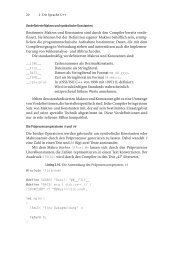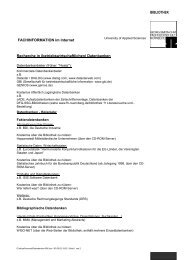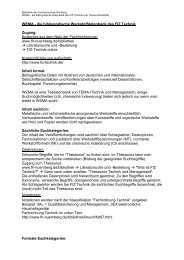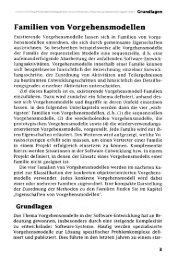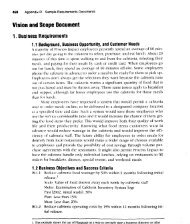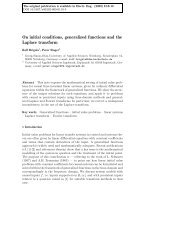Establishing the Product Vision and Project Scope
Establishing the Product Vision and Project Scope
Establishing the Product Vision and Project Scope
You also want an ePaper? Increase the reach of your titles
YUMPU automatically turns print PDFs into web optimized ePapers that Google loves.
Chapter 5 <strong>Establishing</strong> <strong>the</strong> <strong>Product</strong> <strong>Vision</strong> <strong>and</strong> <strong>Project</strong> <strong>Scope</strong> 89<br />
4.2 <strong>Project</strong> Priorities<br />
To enable effective decision making, <strong>the</strong> Stakeholders must agree on <strong>the</strong><br />
project's priorities. One way to approach this is to consider <strong>the</strong> five dimensions<br />
of a software project: features (or scope ), quality, schedule, cost, <strong>and</strong> staff<br />
(Wiegers 1996a). Each dimension fits in one of <strong>the</strong> following three categories<br />
on any given project:<br />
A constraint A limiting factor within '>vhich <strong>the</strong> project manager must operate<br />
A drlver A significant success objective with limited flexibility for adjustment<br />
A degree of freedom A factor that <strong>the</strong> project manager has some latitude to<br />
adjust <strong>and</strong> balance against <strong>the</strong> o<strong>the</strong>r dimensions<br />
The project manager's goal is to adjust those factors that are degrees of<br />
freedom to achieve <strong>the</strong> project's success drivers within <strong>the</strong> Iimits imposed by<br />
<strong>the</strong> constraints. Not all factors can be drivers, <strong>and</strong> not all can be constraints. The<br />
project manager needs some degrees of freedom to be able to respond appropriately<br />
when project requirements or realities change. Suppose marketing suddenly<br />
dem<strong>and</strong>s that you release <strong>the</strong> product one month earlier than scheduled.<br />
How do you respond? Do you<br />
• Defer certain requirements to a later release?<br />
• Shorten <strong>the</strong> planned system test cyde?<br />
• Pay your staff overtime or hire contractors to accelerdte development?<br />
• Shift resources from o<strong>the</strong>r projects to help out?<br />
The project priorities dictate <strong>the</strong> actions you take when such eventualities arise.<br />
4.3 Operating Environment<br />
Describe <strong>the</strong> environment in which <strong>the</strong> system will be used <strong>and</strong> deflne <strong>the</strong> vital<br />
availability, reliability, performance, <strong>and</strong> integrity requirements. This informationwill<br />
significantly influence <strong>the</strong> definition of <strong>the</strong> system's architecture, which<br />
is <strong>the</strong> first-<strong>and</strong> often <strong>the</strong> most important--design step. A system that must support<br />
widely distributed users who require access around <strong>the</strong> dock needs a significantly<br />
different architecture from one that's employed by co-located users<br />
only during normal working hours. Nonfunctional requirements such as fault<br />
tolerance <strong>and</strong> <strong>the</strong> ability to service <strong>the</strong> system while it is running can consume



